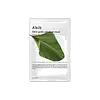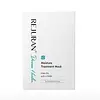What's inside
What's inside
 Key Ingredients
Key Ingredients

 Benefits
Benefits

 Concerns
Concerns

No concerns
 Ingredients Side-by-side
Ingredients Side-by-side

Houttuynia Cordata Extract
Skin ConditioningMethylpropanediol
SolventGlycerin
HumectantWater
Skin ConditioningButylene Glycol
HumectantPortulaca Oleracea Extract
Skin ConditioningAlthaea Rosea Flower Extract
Skin ConditioningCentella Asiatica Extract
CleansingPolygonum Cuspidatum Root Extract
AntioxidantScutellaria Baicalensis Root Extract
AstringentCamellia Sinensis Leaf Extract
AntimicrobialGlycyrrhiza Glabra Root Extract
BleachingChamomilla Recutita Flower Extract
MaskingRosmarinus Officinalis Leaf Extract
AntimicrobialHydroxyethyl Urea
HumectantAllantoin
Skin ConditioningTromethamine
BufferingEthylhexylglycerin
Skin ConditioningPolyglyceryl-10 Laurate
Skin ConditioningPolyglyceryl-10 Myristate
Skin Conditioning1,2-Hexanediol
Skin ConditioningMadecassoside
AntioxidantAsiaticoside
AntioxidantAsiatic Acid
Skin ConditioningMadecassic Acid
Skin ConditioningCarbomer
Emulsion StabilisingCaffeine
Skin ConditioningXanthan Gum
EmulsifyingDisodium EDTA
Houttuynia Cordata Extract, Methylpropanediol, Glycerin, Water, Butylene Glycol, Portulaca Oleracea Extract, Althaea Rosea Flower Extract, Centella Asiatica Extract, Polygonum Cuspidatum Root Extract, Scutellaria Baicalensis Root Extract, Camellia Sinensis Leaf Extract, Glycyrrhiza Glabra Root Extract, Chamomilla Recutita Flower Extract, Rosmarinus Officinalis Leaf Extract, Hydroxyethyl Urea, Allantoin, Tromethamine, Ethylhexylglycerin, Polyglyceryl-10 Laurate, Polyglyceryl-10 Myristate, 1,2-Hexanediol, Madecassoside, Asiaticoside, Asiatic Acid, Madecassic Acid, Carbomer, Caffeine, Xanthan Gum, Disodium EDTA
Water
Skin ConditioningButylene Glycol
HumectantMethylpropanediol
SolventGlycerin
HumectantNiacinamide
SmoothingAloe Barbadensis Leaf Juice
Skin ConditioningDiethoxyethyl Succinate
Solvent1,2-Hexanediol
Skin ConditioningAvena Sativa Kernel Extract
AbrasiveCucumis Sativus Fruit Extract
EmollientCalendula Officinalis Extract
Skin ConditioningPentylene Glycol
Skin ConditioningCarbomer
Emulsion StabilisingAllantoin
Skin ConditioningOctyldodeceth-16
EmulsifyingPanthenol
Skin ConditioningHydroxyethyl Urea
HumectantTromethamine
BufferingLaminaria Ochroleuca Extract
Skin ConditioningAdenosine
Skin ConditioningEthylhexylglycerin
Skin ConditioningXanthan Gum
EmulsifyingCaprylic/Capric Triglyceride
MaskingDisodium EDTA
Hydrolyzed Dna
Skin ConditioningEucalyptus Globulus Leaf Oil
PerfumingSodium Hyaluronate
HumectantHydrogenated Lecithin
EmulsifyingEctoin
Skin ConditioningGlycine
BufferingSerine
MaskingGlutamic Acid
HumectantCholesterol
EmollientPhytosphingosine
Skin ConditioningHydrolyzed Collagen
EmollientCeramide NP
Skin ConditioningAspartic Acid
MaskingLeucine
Skin ConditioningAlanine
MaskingLysine
Skin ConditioningTocopherol
AntioxidantArginine
MaskingTyrosine
MaskingPhenylalanine
MaskingValine
MaskingThreonine
Proline
Skin ConditioningIsoleucine
Skin ConditioningHistidine
HumectantMethionine
Skin ConditioningCysteine
AntioxidantWater, Butylene Glycol, Methylpropanediol, Glycerin, Niacinamide, Aloe Barbadensis Leaf Juice, Diethoxyethyl Succinate, 1,2-Hexanediol, Avena Sativa Kernel Extract, Cucumis Sativus Fruit Extract, Calendula Officinalis Extract, Pentylene Glycol, Carbomer, Allantoin, Octyldodeceth-16, Panthenol, Hydroxyethyl Urea, Tromethamine, Laminaria Ochroleuca Extract, Adenosine, Ethylhexylglycerin, Xanthan Gum, Caprylic/Capric Triglyceride, Disodium EDTA, Hydrolyzed Dna, Eucalyptus Globulus Leaf Oil, Sodium Hyaluronate, Hydrogenated Lecithin, Ectoin, Glycine, Serine, Glutamic Acid, Cholesterol, Phytosphingosine, Hydrolyzed Collagen, Ceramide NP, Aspartic Acid, Leucine, Alanine, Lysine, Tocopherol, Arginine, Tyrosine, Phenylalanine, Valine, Threonine, Proline, Isoleucine, Histidine, Methionine, Cysteine
Ingredients Explained
These ingredients are found in both products.
Ingredients higher up in an ingredient list are typically present in a larger amount.
1,2-Hexanediol is a synthetic liquid and another multi-functional powerhouse.
It is a:
- Humectant, drawing moisture into the skin
- Emollient, helping to soften skin
- Solvent, dispersing and stabilizing formulas
- Preservative booster, enhancing the antimicrobial activity of other preservatives
Allantoin is a soothing ingredient known for its protective and moisturizingg properties. Because of this, it is often added to products with strong active ingredients.
Studies show higher concentrations of this ingredient can promote wound healing.
Though it can be derived from the comfrey plant, allantoin is produced synthetically for cosmetic products to ensure purity.
Learn more about AllantoinButylene Glycol (or BG) is used within cosmetic products for a few different reasons:
Overall, Butylene Glycol is a safe and well-rounded ingredient that works well with other ingredients.
Though this ingredient works well with most skin types, some people with sensitive skin may experience a reaction such as allergic rashes, closed comedones, or itchiness.
Learn more about Butylene GlycolCarbomer is a polymer of acrylic acid. Its main role is to create a gel consistency.
A high amount of carbomer can cause pilling or balling up of products. Don't worry, most products contain 1% or less of carbomer.
Disodium EDTA plays a role in making products more stable by aiding other preservatives.
It is a chelating agent, meaning it neutralizes metal ions that may be found in a product.
Disodium EDTA is a salt of edetic acid and is found to be safe in cosmetic ingredients.
Learn more about Disodium EDTAEthylhexylglycerin (we can't pronounce this either) is commonly used as a preservative and skin softener. It is derived from glyceryl.
You might see Ethylhexylglycerin often paired with other preservatives such as phenoxyethanol. Ethylhexylglycerin has been found to increase the effectiveness of these other preservatives.
Glycerin is already naturally found in your skin. It helps moisturize and protect your skin.
A study from 2016 found glycerin to be more effective as a humectant than AHAs and hyaluronic acid.
As a humectant, it helps the skin stay hydrated by pulling moisture to your skin. The low molecular weight of glycerin allows it to pull moisture into the deeper layers of your skin.
Hydrated skin improves your skin barrier; Your skin barrier helps protect against irritants and bacteria.
Glycerin has also been found to have antimicrobial and antiviral properties. Due to these properties, glycerin is often used in wound and burn treatments.
In cosmetics, glycerin is usually derived from plants such as soybean or palm. However, it can also be sourced from animals, such as tallow or animal fat.
This ingredient is organic, colorless, odorless, and non-toxic.
Glycerin is the name for this ingredient in American English. British English uses Glycerol/Glycerine.
Learn more about GlycerinMethylpropanediol is a synthetic solvent and humectant.
As a solvent, it helps dissolve other ingredients, helping to evenly distribute ingredients throughout the product. This ingredient has also been shown to have antimicrobial properties which makes it a preservative booster.
Methylpropanediol is able to add a bit of moisture to the skin. It also helps other ingredients be better absorbed into the skin, such as salicylic acid.
Learn more about MethylpropanediolTromethamine helps balance the pH and improve the texture of a product. It is synthetically created.
As an emulsifier, Tromethamine prevents oil and water ingredients from separating. This helps stabilize the product and elongate a product's shelf life. Tromethamine also makes a product thicker.
Tromethamine helps balance the pH level of a product. Normal pH level of skin is slightly acidic (~4.75-5.5). The acidity of our skin is maintained by our glands and skin biome. Being slightly acidic allows our skin to create an "acid mantle". This acid mantle is a thin barrier that protects our skin from bacteria and contaminants.
Oral Tromethanmine is an anti-inflammatory drug but plays the role of masking, adding fragrance, and/or balancing pH in skincare.
1,3-Propanediol, 2-amino-2-(hydroxymethyl)-
Learn more about TromethamineWater. It's the most common cosmetic ingredient of all. You'll usually see it at the top of ingredient lists, meaning that it makes up the largest part of the product.
So why is it so popular? Water most often acts as a solvent - this means that it helps dissolve other ingredients into the formulation.
You'll also recognize water as that liquid we all need to stay alive. If you see this, drink a glass of water. Stay hydrated!
Learn more about WaterXanthan gum is used as a stabilizer and thickener within cosmetic products. It helps give products a sticky, thick feeling - preventing them from being too runny.
On the technical side of things, xanthan gum is a polysaccharide - a combination consisting of multiple sugar molecules bonded together.
Xanthan gum is a pretty common and great ingredient. It is a natural, non-toxic, non-irritating ingredient that is also commonly used in food products.
Learn more about Xanthan Gum